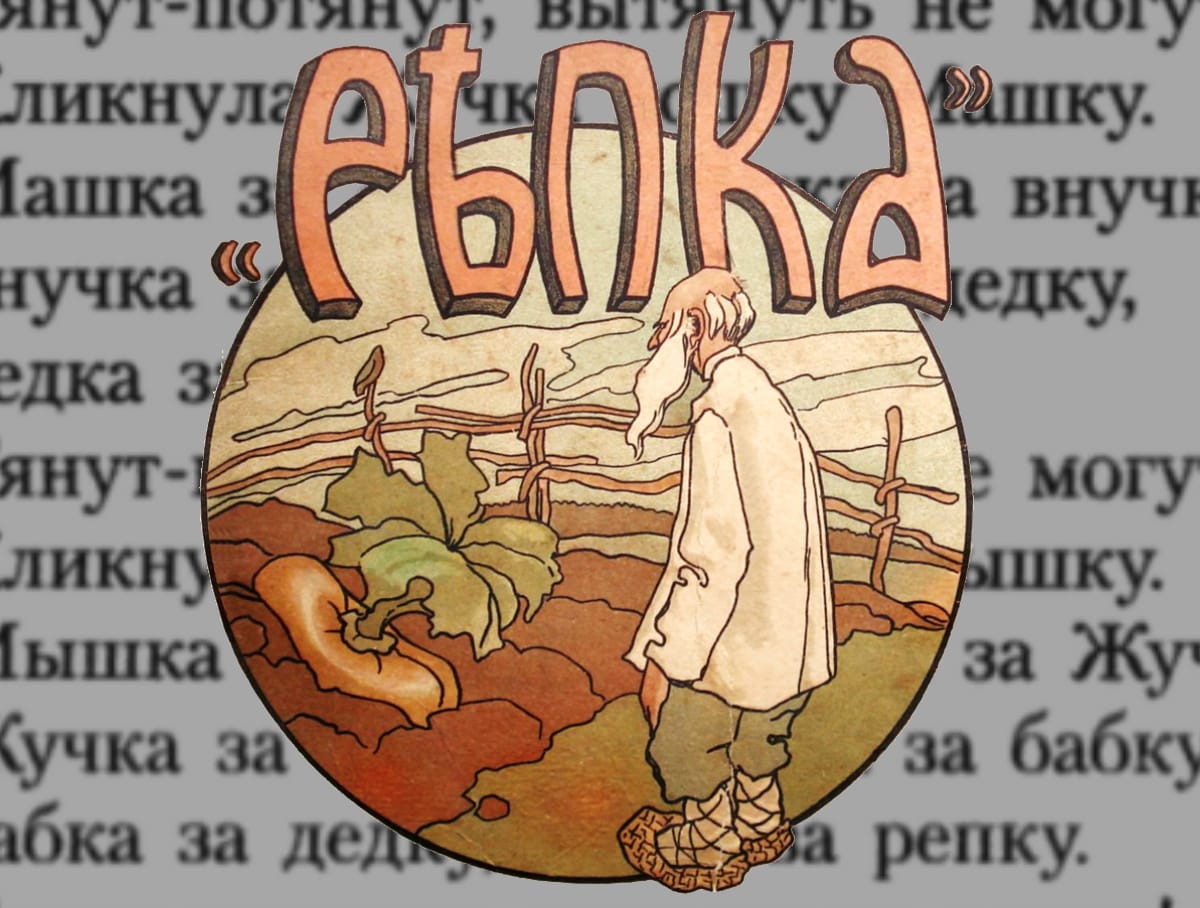According to a version popular on the Internet, the only proper name in the Russian folk tale appeared quite late - and not for the sake of rhyming with “granddaughter,” but for censorship reasons. We checked if this is true.
That's it reports popular blogger Igor Bigdan (ibigdan): “Have you ever wondered why in the Russian folk tale about a turnip only Zhuchka has a name? The remaining characters without names are grandfather, grandmother, granddaughter, cat, mouse. It turns out that in the fairy tale about the turnip, written down in the mid-19th century by fairy tale publisher and folklorist A. N. Afanasyev and published in his collection, the dog is called not a Bug, but a bitch. The bug appeared later in one of the many adaptations for children.”
The journalist reported similar information Sergey Dorenko, noting the role of censorship in the story. You can also learn about it from question answering services ("Big Question.ru", sprashivalka.com).
“The Turnip” is a folk tale, so it would not be entirely correct to talk about some kind of original (primary source). Works of oral folk art not only tend to change over time, but often exist in parallel in several versions. However, we can at least trace the history of the first publications.
It is believed that the first work about turnips was published by the collector of Russian folklore Alexander Afanasyev in his collection “Russian Folk Tales”. In this regard, the year 1863 is often mentioned on the Internet, but we found a publication of this tale in 1860 edition. It is not found in earlier sources available today, although the publication itself is a reprint of a similar book from 1858, as reported at the beginning of the volume. The fairy tale itself, as indicated, was recorded by A. Kharitonov in the Arkhangelsk province.

What do we see? Indeed, after the grandmother and granddaughter, a nameless bitch—apparently a female dog—comes to help the grandfather. It is also interesting to note that after a knot, it is not the cat or the mouse that gets involved, but the “leg” (with an emphasis on the “o”), and only with the arrival of the fifth leg can the turnip be pulled out of the ground. There are several versions about this - for example, in the 1983 edition of “Folk Russian Fairy Tales by A. N. Afanasyev” it is said that this bird leg, that is, a griffin. But this note does not quite agree with the Vologda version of the tale, cited by the same Afanasyev (“A leg is running along the path. “Leg, help me pick a turnip.” They tore and tore, they could not pull it out...”). But in the collection “Children's Songs” published in 1868, edited by Pyotr Bessonov everything fits: “A leg has arrived, another has arrived, a third has arrived...” In one of the pre-revolutionary illustrations we can see legs in the everyday sense:

But we are more interested in the personality of the third assistant, who is also called a “bitch” by Bessonov. When did she become a Bug? This happened even before Bessonov, but soon after the release of Afanasyev’s collection. In 1864, the founder of scientific pedagogy in Russia, Konstantin Dmitrievich Ushinsky, published a textbook "Native word", which gained great popularity and was published from 1864 until the revolution several times a year. It is here that the dog gets a name: “The granddaughter called to the Bug. A bug for a granddaughter, a granddaughter for a grandmother, a grandmother for a grandfather, a grandfather for a turnip: they pull and pull, but they can’t pull it out. Bug called the cat. The cat for the Bug, the Bug for the granddaughter, the granddaughter for the grandmother, the grandmother for the grandfather, the grandfather for the turnip: they pull and pull, but they can’t pull it out. The bug called Masha. Masha for the Bug, Zhuchka for the granddaughter, granddaughter for the grandmother, grandmother for the grandfather, grandfather for the turnip: they pull and pull, they can’t pull it out. Masha clicked the mouse. The mouse for Masha, Masha for the Bug, the Bug for the granddaughter, the granddaughter for the grandmother, the grandmother for the grandfather, the grandfather for the turnip, they pull and pull - they pulled out the turnip.”
As you can see, in addition to Zhuchka, Ushinsky also mentions Masha (possibly a cat) and a mouse. Most likely, Ushinsky took the Arkhangelsk version published by Afanasyev as the basis for his adaptation - it differs from the others. At the same time, Ushinsky did not leave information about why he abandoned the word “bitch,” but, given that in the 19th century the word already had not the most pleasant context, his action is understandable. And in the future, Ushinsky’s textbook, which was distributed to the most remote corners of the country, could certainly influence the oral folklore tradition. Yes, already in "Turnip", recorded by folklorists in Zaonezhye in 1926, we meet the granddaughter, and Zhuchka, and Masha, and the cat, and the mouse. In most modern versions of the fairy tale, Masha no longer exists, so in them Zhuchka is the only character with a proper name (after some except, when Masha is the name of a cat). As for our main question, then, indeed, the “bitch” became the “Bug” after the first publication of the folk tale.
Is it true
Read on topic:
1. “The turnip has grown big and strong”: about some features of the popular fairy tale
If you find a spelling or grammatical error, please let us know by highlighting the error text and clicking Ctrl+Enter.






